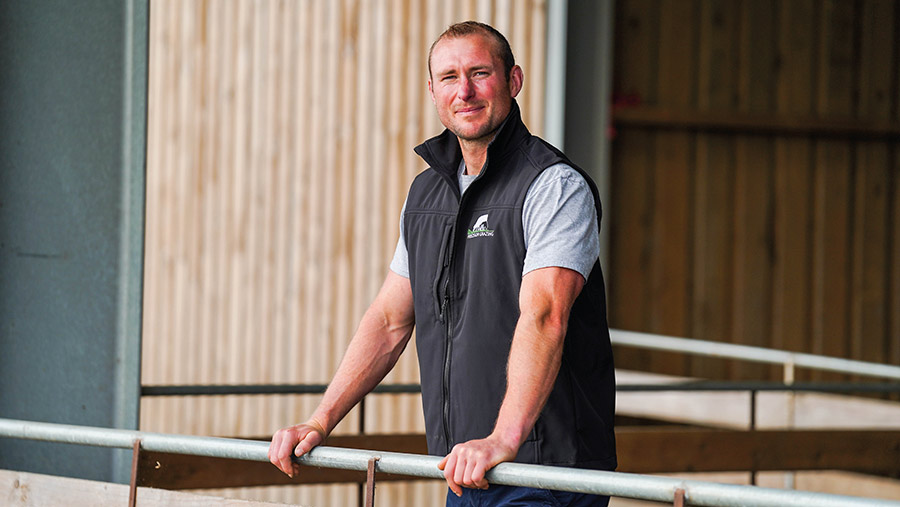How good grass management can cut costs by up to £40,000/year
 James Daniel © Emily Fleur
James Daniel © Emily Fleur James Daniel advises his livestock farmer clients to make the best use of grassland management, which has led to some of his beef and sheep customers saving £20,000-£40,000 in concentrate feed every year.
The better use of grassland and extending the grazing season sees some of the stock farmers he advises cutting out expensive concentrate feed completely.
This has a knock-on benefit of lowering lower fertiliser and fuel costs.
See also: Dairy herd introduction leads to better crop profit margins
Business details
- Precision Grazing – founded in 2016
- Discussion groups – 19
- Farm business members – 320
- Clients in regular contact – 40-50
“We are enabling farmers to grow more and better-quality grass, displacing the need for purchased feed,” he tells Farmers Weekly.
Winning formula
Mr Daniel, managing director of grassland consultancy Precision Grazing, based in Cornwall, used his experience of working in New Zealand to introduce a system that gives grassland long rest periods after short bouts of grazing.
This approach helped him to win Farmers Weekly’s 2022 Livestock Adviser of the Year award.
His livestock clients are increasing their productivity by maintaining the same revenue while slashing costs through making pasture management their number one priority – acknowledging that using grassland fully is the most profitable way of fattening lambs and cattle.
“Most of my clients do not use concentrate feed, they only keep it as a tool if it is needed,” he says.
His philosophy is to give grassland lengthy periods of rest, so avoiding overgrazing.
Often, two to three days of grazing is followed by two to three weeks of rest.
These rest periods are particularly important for autumn and winter management to give pasture time to rest and then quickly recover in the spring.
With stock moving often and grassland having more time to recover, there is less danger of overgrazing, which means grass can replenish without the need for large applications of fertiliser. This helps cut back on expensive input costs.
Longer grazing season
In addition, preserving good grass into the autumn can extend the length of the grazing season, which means a shorter winter housing period, and a subsequent saving on fuel used for bedding stock and cleaning out sheds.
Furthermore, with a focus on long grazing periods and shorter winter housing, there may be less need for machinery such as feeder wagons, which can reduce maintenance and depreciation, and help cut capital investment and improve cashflow.
Mr Daniel is particularly keen on using herbal leys to give good summer grazing.
They can help improve dry and poor soils, with the leys incorporating deep-rooting plants, such as plantain and chicory, to tap into moisture deep down in the soil profile.
In addition, mob-grazing can also be an effective way to improve organic matter, as stock trample some of the grass into the ground.
“Soils are often dry because they are low in organic matter. This means they are not very moisture retentive, so plants do not grow well.
“The herbal leys can break this cycle by capturing deep moisture and creating a big biomass,” he says.
Devon farmers Chris and Sarah Berry cut costs and improved productivity by following Mr Daniel’s advice to switch from an early lambing, winter-housed, 900-strong Mule flock to New Zealand Highlander ewes lambing later outdoors.
This helped to cut out concentrate feed use and winter housing.
A switch from larger South Devon cows, calved in the spring and autumn, to 65 Angus-cross spring-calving sucklers again helped to eliminate concentrate feed and winter housing at their 160ha (395-acre) Higher Thornton Farm, Kennford, just south of Exeter.
The Farmers Weekly 2023 Livestock Adviser of the Year
James Daniel was Farmers Weekly’s Livestock Adviser of the Year 2022.
Enter yourself or nominate someone for this award or one of the other categories for our 2023 awards on our Awards website.
